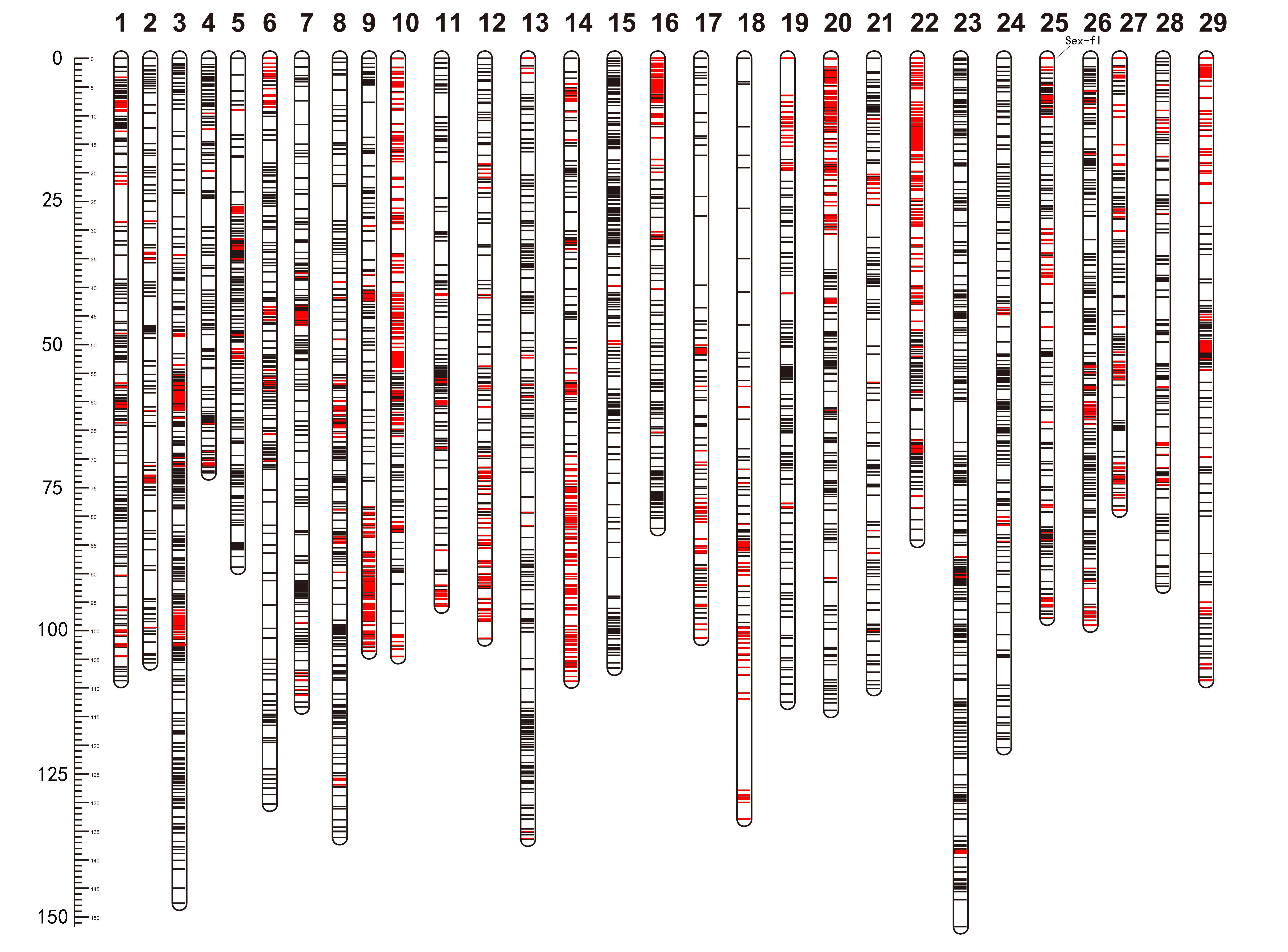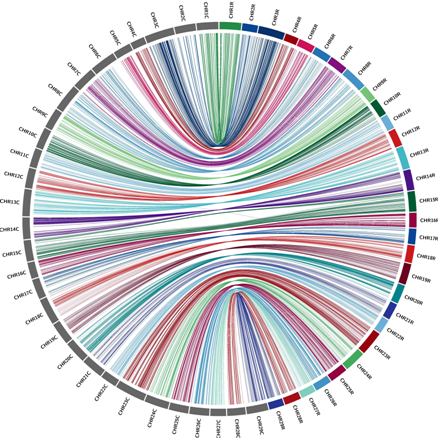DNA Research:中科院武汉植物园黄宏文组构建猕猴桃高密度遗传图谱
9月14日DNA Research发表中国科学院武汉植物园黄宏文组的研究成果,研究构建猕猴桃高密度遗传图谱。
猕猴桃富含果实维生素C、膳食纤维和多种矿物营养,被誉为“水果之王”。猕猴桃属具有 54 个种,21个种下分类群,遗传多样性丰富,而商业栽培品种中主要为中华猕猴桃。随着我国人民生活水平的迅速提高,对高品质、新品种猕猴桃的需求显著增加。猕猴桃为功能性雌雄异株多年生果树,在传统育种中面临着占地面积大、童期长等限制因素。将分子辅助育种与传统育种相结合,针对性的育种方式能在很大程度上减少土地、水肥和人力成本的浪费,有着重要的学术意义和较高的经济价值。
武汉植物园猕猴桃资源与育种学科组助理研究员张琼,采用山梨猕猴桃和中华猕猴桃种间杂交群体,利用基于第二代测序的RAD-seq技术构建猕猴桃种间高密度遗传连锁图谱。父母本图谱中各有29个连锁群(2X=58),分别包含4214和2426个SNP标记。该图谱能将猕猴桃基因草图中无法组装的440个Scafflold锚定到基因组上,极大提高基因组组装水平。猕猴桃种间高密度遗传图谱不仅为猕猴桃基因组序列精细组装提供了重要参考,并为开展猕猴桃优异性状的QTL定位研究,挖掘相关候选基因奠定了基础。同时,将群体性别表型标记定位在图谱上,锁定性别相关区段在第25号染色体端粒位置,并开发3个性别鉴定标记,用于猕猴桃植株早期性别筛选,利于猕猴桃分子辅助育种。

猕猴桃高密度遗传图谱

猕猴桃连锁群共线性关系图
原文链接:
High-density interspecific genetic maps of kiwifruit and the identification of sex-specific markers
原文摘要:
Kiwifruit (Actinidia chinensis Planchon) is an important specialty fruit crop that suffers from narrow genetic diversity stemming from recent global commercialization and limited cultivar improvement. Here, we present high-density RAD-seq-based genetic maps using an interspecific F1 cross between Actinidia rufa ‘MT570001’ and A. chinensis ‘Guihai No4’. The A. rufa (maternal) map consists of 2,426 single-nucleotide polymorphism (SNP) markers with a total length of 2,651 cM in 29 linkage groups (LGs) corresponding to the 29 chromosomes. The A. chinensis (paternal) map consists of 4,214 SNP markers over 3,142 cM in 29 LGs. Using these maps, we were able to anchor an additional 440 scaffolds from the kiwifruit draft genome assembly. Kiwifruit is functionally dioecious, which presents unique challenges for breeding and production. Three sex-specific simple sequence repeats (SSR) markers can be used to accurately sex type male and female kiwifruit in breeding programmes. The sex-determination region (SDR) in kiwifruit was narrowed to a 1-Mb subtelomeric region on chromosome 25. Localizing the SDR will expedite the discovery of genes controlling carpel abortion in males and pollen sterility in females.
doi: 10.1093/DNAres/dsv019
作者:黄宏文

